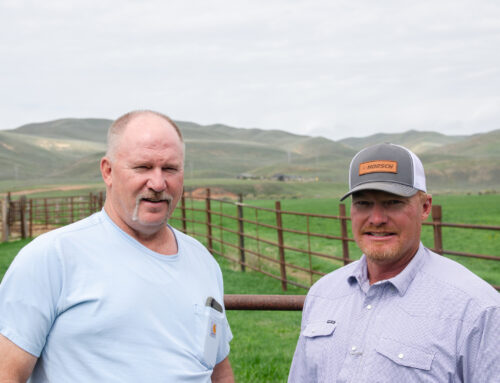Three years on, Minnesota’s climate initiative spurring projects
June 3, 2025
Another summer-like day, another air quality alert. Now almost an annual recurrence, hazy skies from Canadian wildfire smoke beg the question: If the underlying cause is climate change, what are we doing about it? In Minnesota, it’s quite a lot.
While efforts to address climate have faced a setback in Congress — where a massive budget bill would cut tax credits for green energy projects in Minnesota — state agencies, communities and citizens continue to plan and initiate projects that implement the state’s Climate Action Framework, an initiative created to help prepare the state for climate change.
Leading that effort is Kate Knuth, the climate director with the Minnesota Pollution Control Agency (MPCA).
In 2007, Knuth was elected to the Minnesota House. She served three terms, introducing or seeing through several climate- and environment-related bills. Knuth later served on Minnesota’s Environmental Quality Board and as the chief resilience officer for the city of Minneapolis.
She earned a doctorate in conservation and started her own consultancy aimed at revitalizing democratic institutions to empower them to fight climate change. In 2021, Knuth ran for mayor of Minneapolis, and the campaign highlighted her Minneapolis Green New Deal proposal encouraging Minneapolis residents to take climate action.
Fall updates to the framework
In addition to addressing the causes of climate change, much of the work focuses on mitigating its impacts. For wildfire smoke, people can stay indoors or wear a mask outdoors. To deal with increasing rains, cities can improve stormwater and wastewater systems.
Now entering its third year, the Climate Action Framework is undergoing an update to be rolled out this fall. Changes may include ideas from a public comment period that received about 200 responses, Knuth said.
“People are excited to help move the state forward on climate, they are really engaged,” she said. Knuth said many have attended information meetings in-person and virtual.
From large cities to small towns, from all colors on the political spectrum, the trend toward a warmer and wetter climate affects everyone.
“Climate cuts across all departments in state government,” said Knuth, who will be talking about the framework June 16 at a joint event with Th!ird Act Minnesota at Valley Community Presbyterian Church in Golden Valley.
“Working together, we can do a better job of reducing the impacts of climate change and be better prepared. It pays a lot of benefits.”
Grants for city projects
If differing ideologies and less enthusiasm about addressing climate change are evident at the federal level, significant funding remains available in Minnesota, though Knuth said, “We don’t have a federal partner the way we did before. We have to fight for the funding.”
For instance, the state received $200 million from the U.S. Environmental Protection Agency’s Climate Pollution Reduction Grants program for “climate-smart” food systems projects in Minnesota. This includes agriculture, with grant applications due July 9 to the Minnesota Department of Agriculture for the market development of cover crops, a tool for reducing greenhouse gas emissions.
In 2023, meanwhile, the state Legislature set aside $100 million for MPCA grants for infrastructure planning and projects addressing greenhouse gas emissions and wastewater and stormwater management. This helps to make communities more resilient to the impacts of climate change. An interactive map shows grant locations, amounts and types.
Stormwater management challenges
The majority of climate grants to communities address stormwater. With increasing rainfall and severe storms, managing stormwater becomes more challenging for cities, particularly smaller ones in rural areas.

Perched on a bluff above the Minnesota River in southern Renville County, the small town of Franklin (population 513) sees heavy stormwater gushing from city storm sewers into a ravine, carrying tons of sediment into the river.
The city received a grant of more than $2.1 million from the MPCA to build a system that will better control stormwater from the city and down the river bluff. “It’s a big deal,” said Kevin Kokesch, who manages public works for the city. The total cost will be $2.35 million, with the city contributing 10%.
The project will create holding ponds and a pipe that will slow the water and greatly reduce erosion. “It will be nice to prevent sediment from getting into the Minnesota River, and keep the ravine from sloughing down,” said Shane Traulich, engineer with Bolton and Menk working on the project.
In addition to benefiting water quality in the Minnesota River, the project is located in the Lower Sioux Agency service area, meeting the grant program’s criteria for environmental justice.
‘Stronger focus on collaboration’
More than 3,000 Minnesotans helped shape the Climate Action Framework. An MPCA statement says the CAF “sets a vision for how the state will address and prepare for climate change. It identifies immediate, near-term actions to achieve the long-term goal of a carbon-neutral, resilient, and equitable future for Minnesota.”
The main goals of the CAF include: “Clean transportation, climate-smart natural and working lands, resilient communities, clean energy and efficient buildings, healthy lives and communities, and clean economy.”
An MPCA statement about the CAF update says it will “include a more comprehensive set of actions with a stronger focus on collaboration, community benefits, and workforce needs. We have made progress since the original framework was published in 2022. But we must increase the pace and scale of our actions to achieve our vision of a carbon-neutral, resilient, and equitable Minnesota.”
The MPCA is hosting a June 16 webinar about the updates to the Climate Action Framework.
Search
RECENT PRESS RELEASES
Related Post



